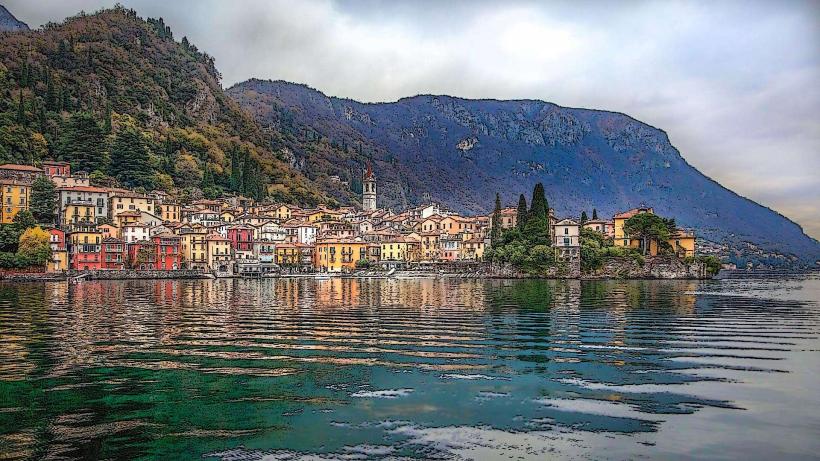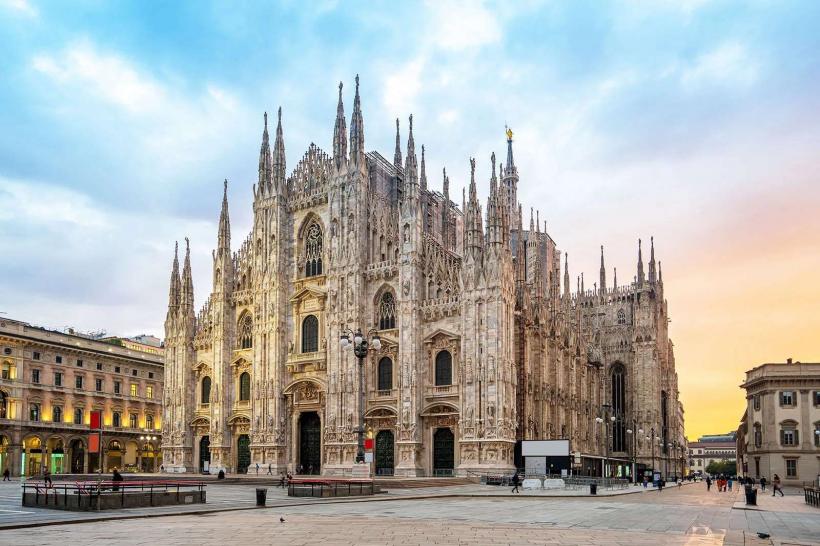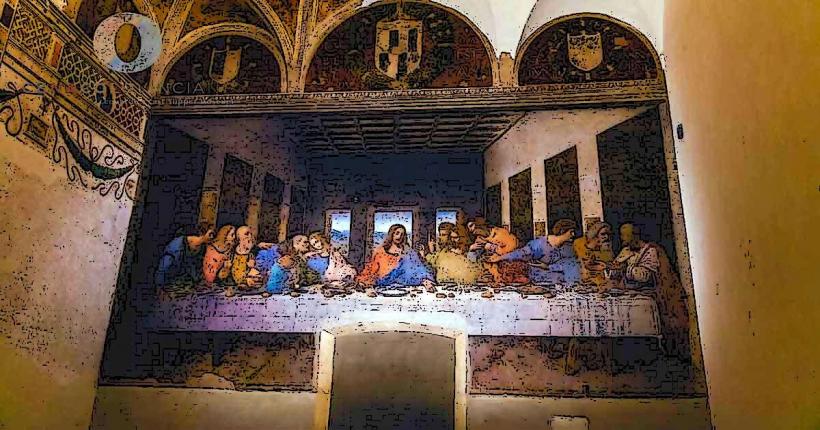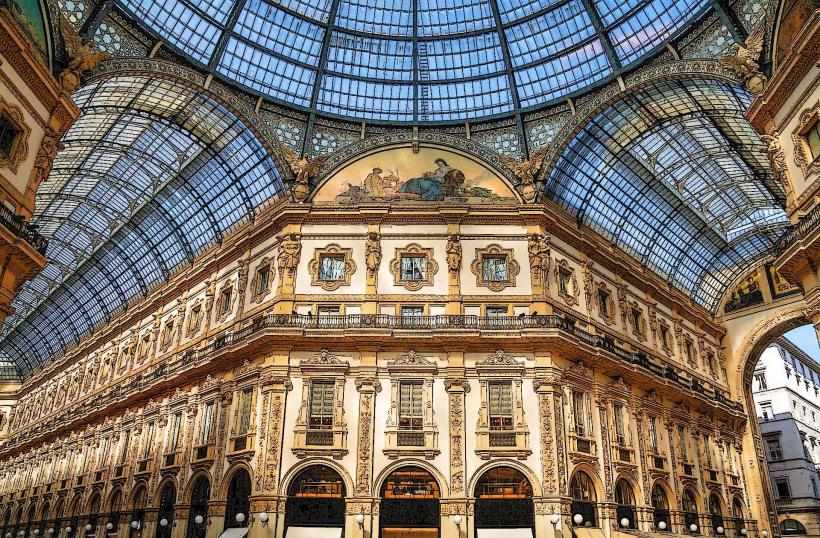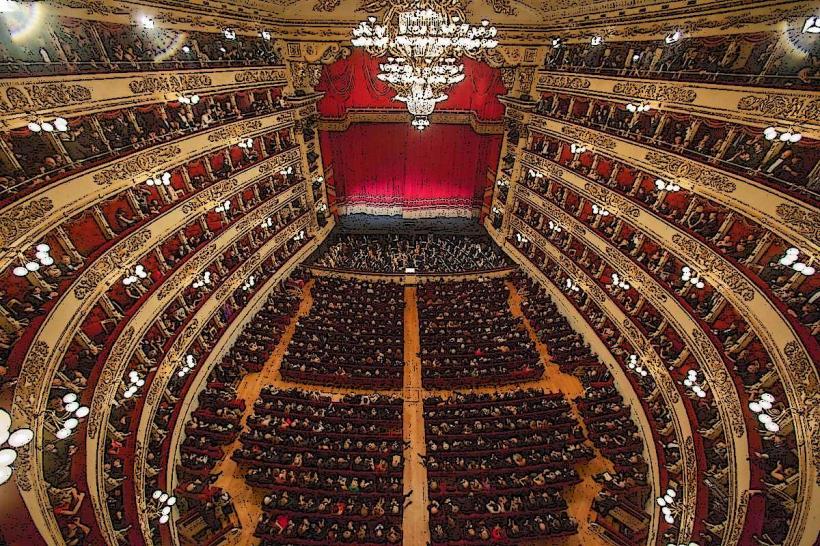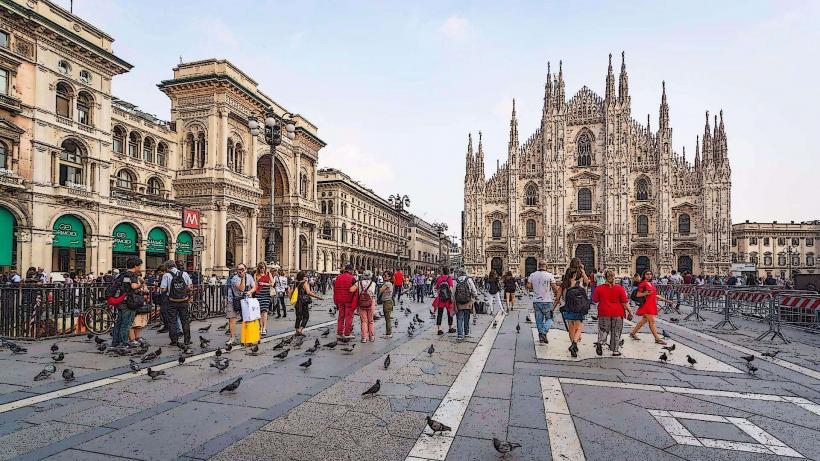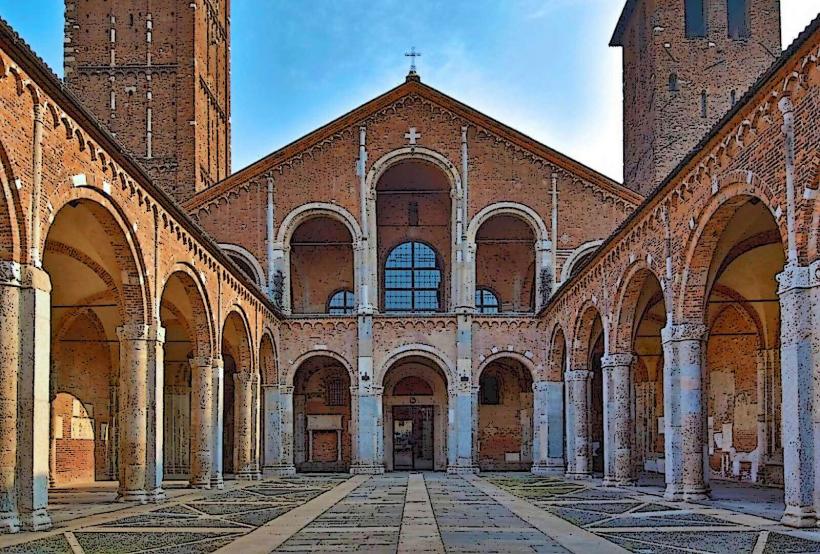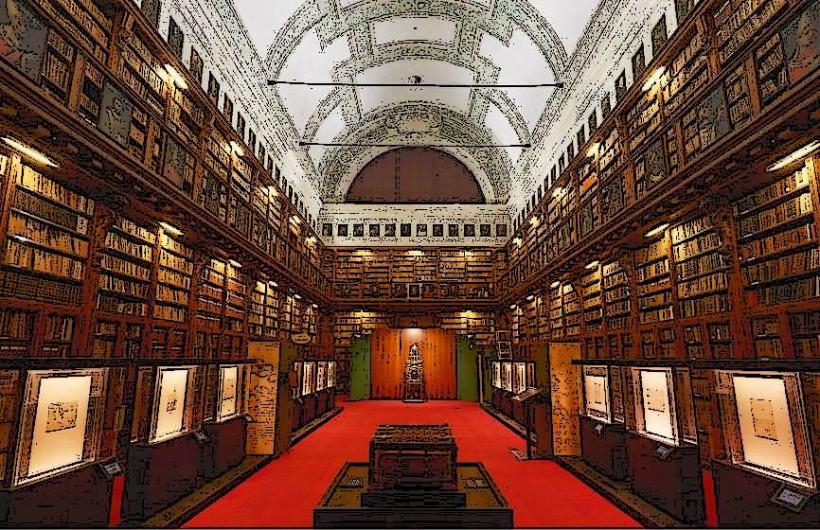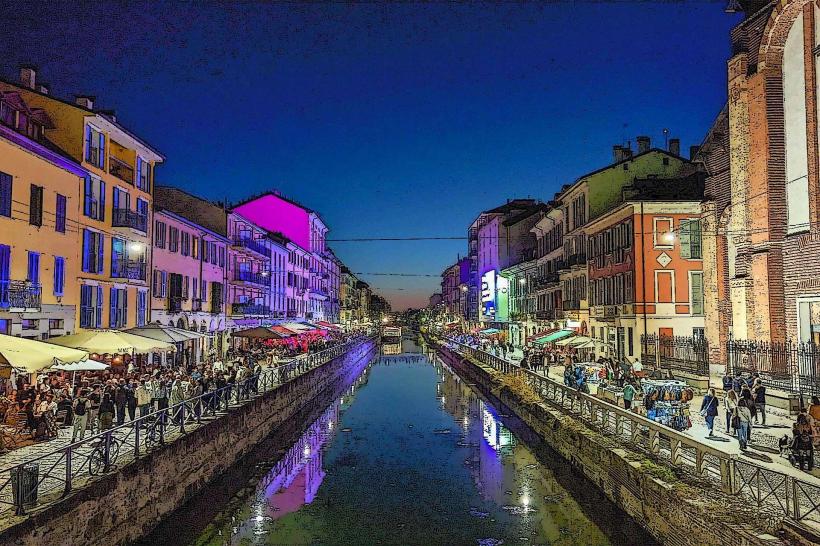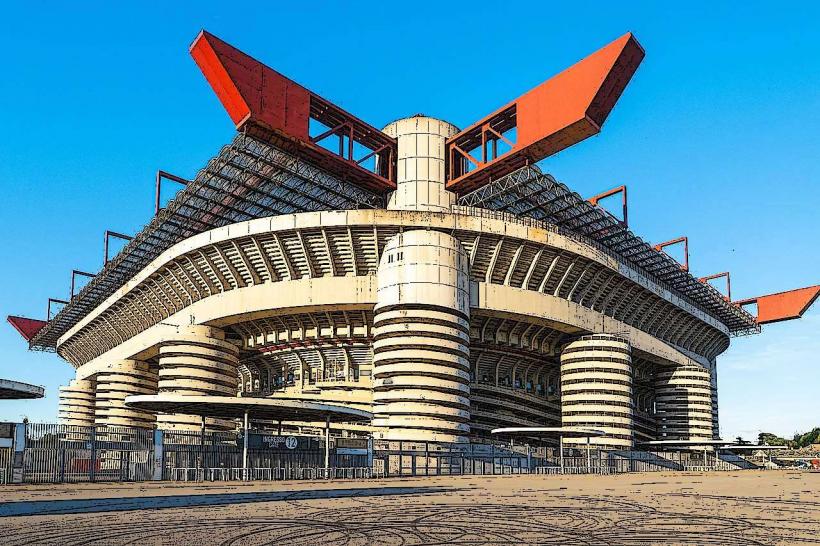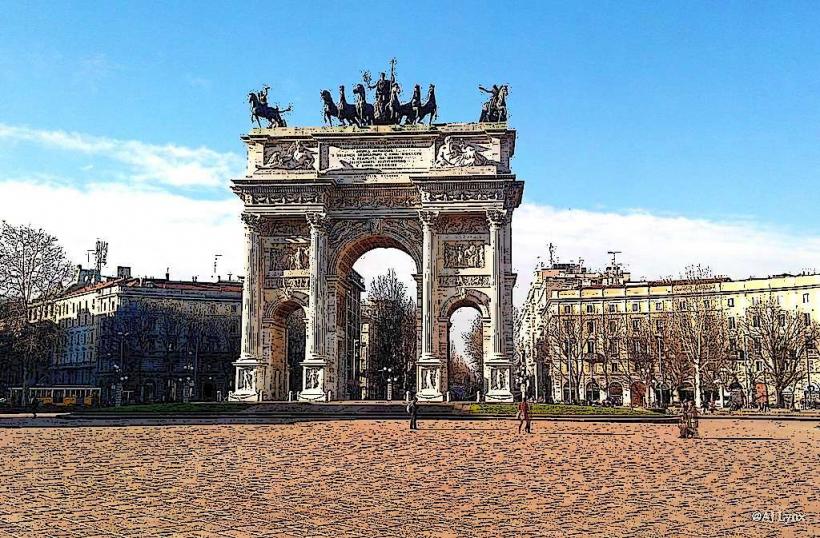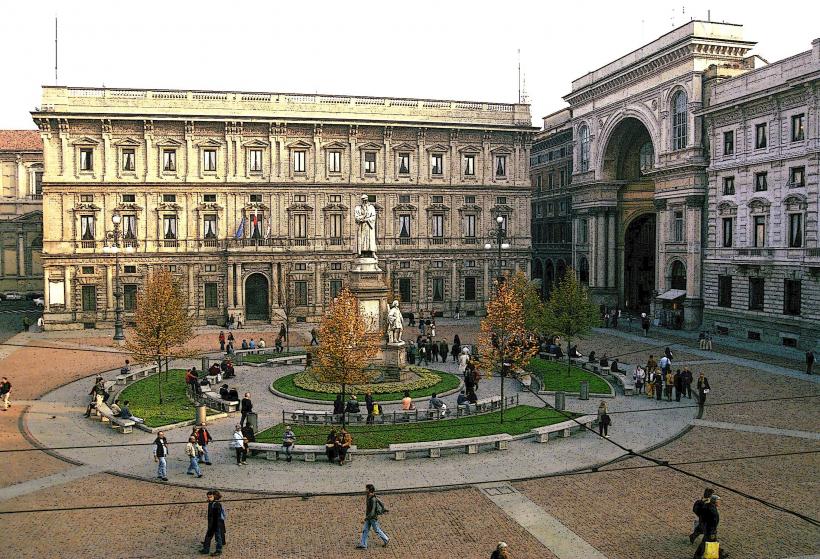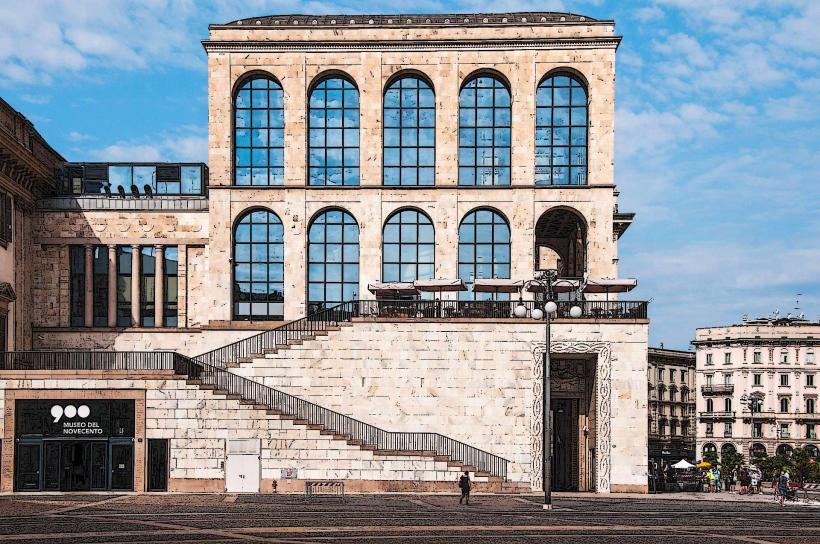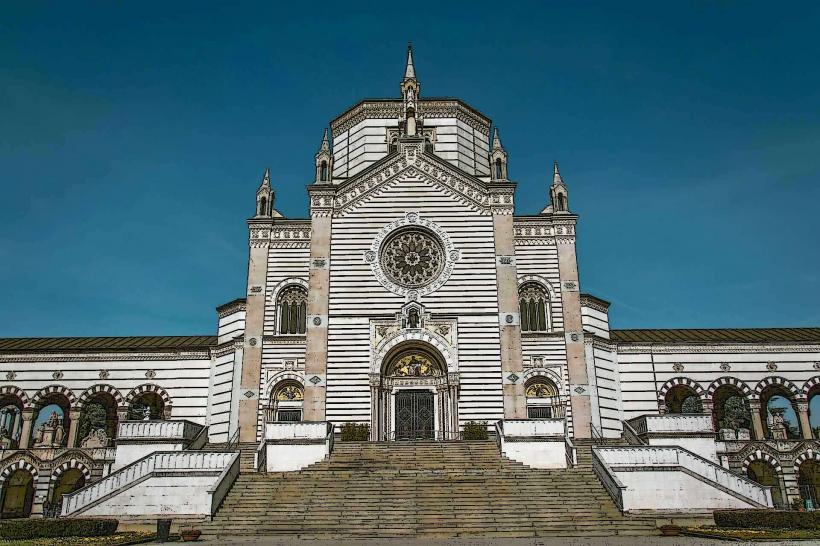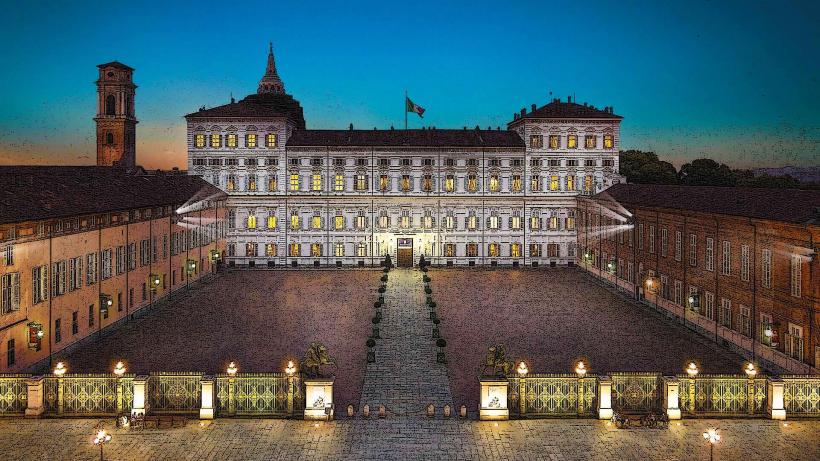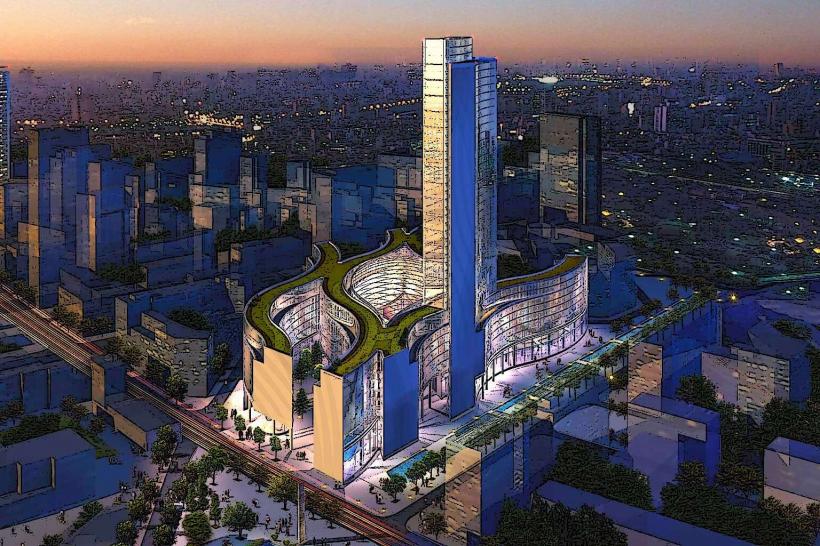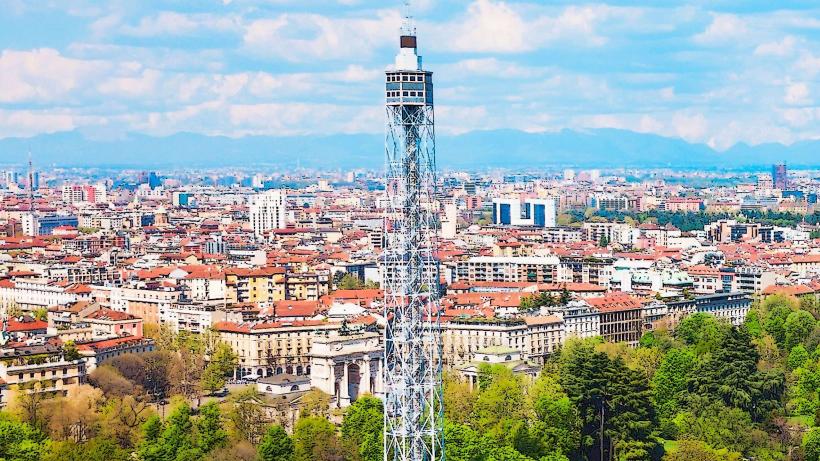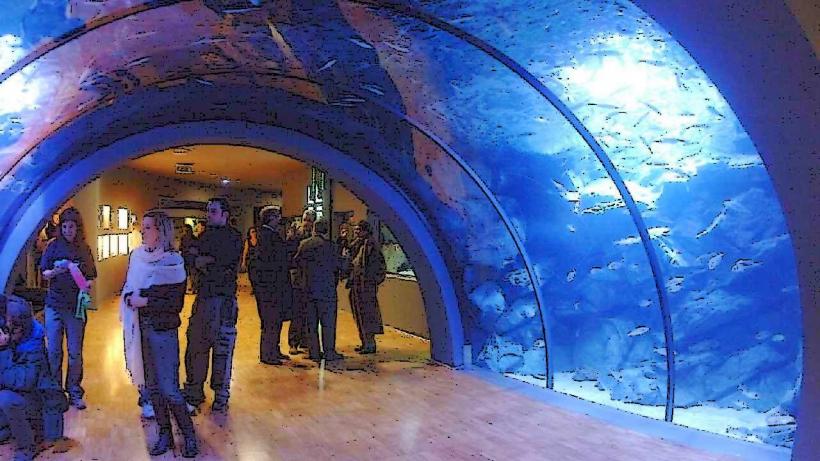Information
Landmark: Sforza CastleCity: Milan
Country: Italy
Continent: Europe
The Sforza Castle (Castello Sforzesco) is one of the most iconic landmarks in Milan, Italy. It is an impressive historical fortress that has played a crucial role in the city’s history, and it now houses several museums and art collections. The castle is a perfect blend of military architecture and artistic heritage, offering visitors a glimpse into Milan’s Renaissance past.
1. Historical Background
- Foundation and Early History: The Sforza Castle was originally built in the 15th century by the Duke of Milan, Francesco Sforza, who commissioned its construction in 1450. The castle was designed to be both a fortress and a residence, showcasing the power and wealth of the ruling Sforza family.
- Architectural Evolution: Initially, the castle was built on the site of a 14th-century fortification, which was destroyed and rebuilt during the Sforza era. Filippo Maria Visconti, the last of the Visconti dynasty, had the original structure. After Francesco Sforza took control of Milan, he commissioned the famous architect Gian Galeazzo Sforza to redesign and expand the castle.
- Renaissance Influence: In the 15th century, the Sforza family invited artists, architects, and engineers to the castle, turning it into a center of art and innovation. Leonardo da Vinci was involved in some of the castle’s design and decoration, including creating the Sforza Horse sculpture, a project that was eventually completed after his death.
- Decline and Restoration: The castle fell into disrepair after the fall of the Sforza dynasty in the 16th century and during later invasions by the French and Spanish. It underwent major restoration efforts in the 19th century under Napoleon Bonaparte and later the Kingdom of Italy.
2. Architectural Features
- Design and Layout: The Sforza Castle is a large and imposing complex, with several courtyards, towers, and fortifications. The main entrance is marked by a monumental drawbridge and a large central courtyard, which is flanked by the main buildings. The structure has a rectangular shape and features four corner towers, with the tallest one being the Centrale Tower (also known as the Filarete Tower).
- Filarete Tower: This tower, named after the architect Antonio Averlino Filarete, was designed with a large clock tower and a decorative stone portal. The distinctive circular window above the gate is one of the most recognized features of the castle’s entrance.
- Moat and Fortifications: Originally, the castle was surrounded by a moat and heavily fortified walls, which have mostly been replaced with green spaces and open areas. The massive defensive walls were designed to protect the Sforza family and the city from potential invaders.
- Renaissance Courtyards: Inside the castle, the Cortile delle Armi (Court of Arms) is the largest courtyard, surrounded by buildings that were once used for military purposes. The Cortile della Rocchetta (Court of the Keep) is another notable courtyard, surrounded by Renaissance-style arcades and rooms.
- Decorative Elements: The interiors of the castle are decorated with various frescoes, ceilings, and paintings, which were created by Leonardo da Vinci, Donato Bramante, Piero della Francesca, and other Renaissance artists. Some rooms have been preserved as museum spaces showcasing these works of art.
3. Museums and Art Collections
The Sforza Castle houses several museums and cultural institutions that attract visitors from all over the world. Some of the key attractions inside the castle include:
- Museo d'Arte Antica (Museum of Ancient Art): Located in the castle’s Centrale Tower and Rocchetta Courtyard, this museum displays a collection of Renaissance and Medieval sculptures, paintings, and decorative arts. The collection includes notable works such as sculptures by Michelangelo, including the Pietà Rondanini, which is one of his last works before his death.
- Pinacoteca (Art Gallery): This gallery features an extensive collection of paintings, including masterpieces by Gian Giacomo Caprotti (Leonardo's pupil), Antonello da Messina, and other Renaissance artists.
- Museo degli Strumenti Musicali (Museum of Musical Instruments): This museum exhibits a collection of ancient musical instruments, many of which were once used in the courts of the Sforza family. It includes a variety of string instruments, percussion, and keyboard instruments, showcasing the rich musical heritage of Milan.
- Museum of Prehistoric Art: The Sforza Castle also houses exhibits dedicated to prehistoric art and artifacts from prehistoric eras. This museum includes a fascinating collection of stone tools, pottery, and relics.
- Egyptian Museum: The Sforza Castle is also home to a section dedicated to Egyptian antiquities, showcasing the history and art of ancient Egypt.
4. Leonardo da Vinci’s Legacy
One of the most significant figures associated with the Sforza Castle is Leonardo da Vinci. The great Renaissance master played an essential role in the artistic and scientific development of Milan during the Sforza period. Leonardo was involved in the creation of the Sforza Horse sculpture, a monumental equestrian statue that was never completed during his lifetime but was later reconstructed in the 20th century. The sculpture was meant to honor Francesco Sforza and was one of the most ambitious works of the Renaissance era. The Sforza Horse stands as a symbol of Leonardo’s genius and his contribution to Milan’s cultural legacy.
5. Public Gardens and Surroundings
The castle is surrounded by a large, beautiful public park called Parco Sempione. The park, which is one of the largest green spaces in Milan, was designed in the 19th century and is a popular place for both locals and tourists to relax. It offers a tranquil escape from the bustling city and provides excellent views of the castle's exterior. At the far end of the park is the Arco della Pace (Arch of Peace), a triumphal arch built to commemorate peace after Napoleon’s defeat.
6. Visiting the Castle
- Access: The Sforza Castle is located in the historic center of Milan, near Parco Sempione. It is easily accessible by public transport, including the M1 subway line (red line), which stops at the Cadorna and Sforza Station.
- Hours and Admission: The castle is open to the public every day except Mondays, and admission to the grounds is free. Entry to the museums and art collections requires a ticket, which can be purchased at the entrance or online.
- Events and Exhibitions: Throughout the year, the Sforza Castle hosts various events, exhibitions, and cultural activities, including art exhibitions, music performances, and festivals, making it a dynamic cultural hub for the city of Milan.
7. Conclusion
The Sforza Castle is an essential destination for anyone visiting Milan. Its rich history, architectural beauty, and artistic treasures provide a glimpse into Milan’s past, particularly during the Renaissance period. Whether exploring the museums, strolling through the gardens, or admiring the castle’s stunning architecture, visitors will experience the unique blend of military might and cultural sophistication that defined Milan during the rule of the Sforza family.

